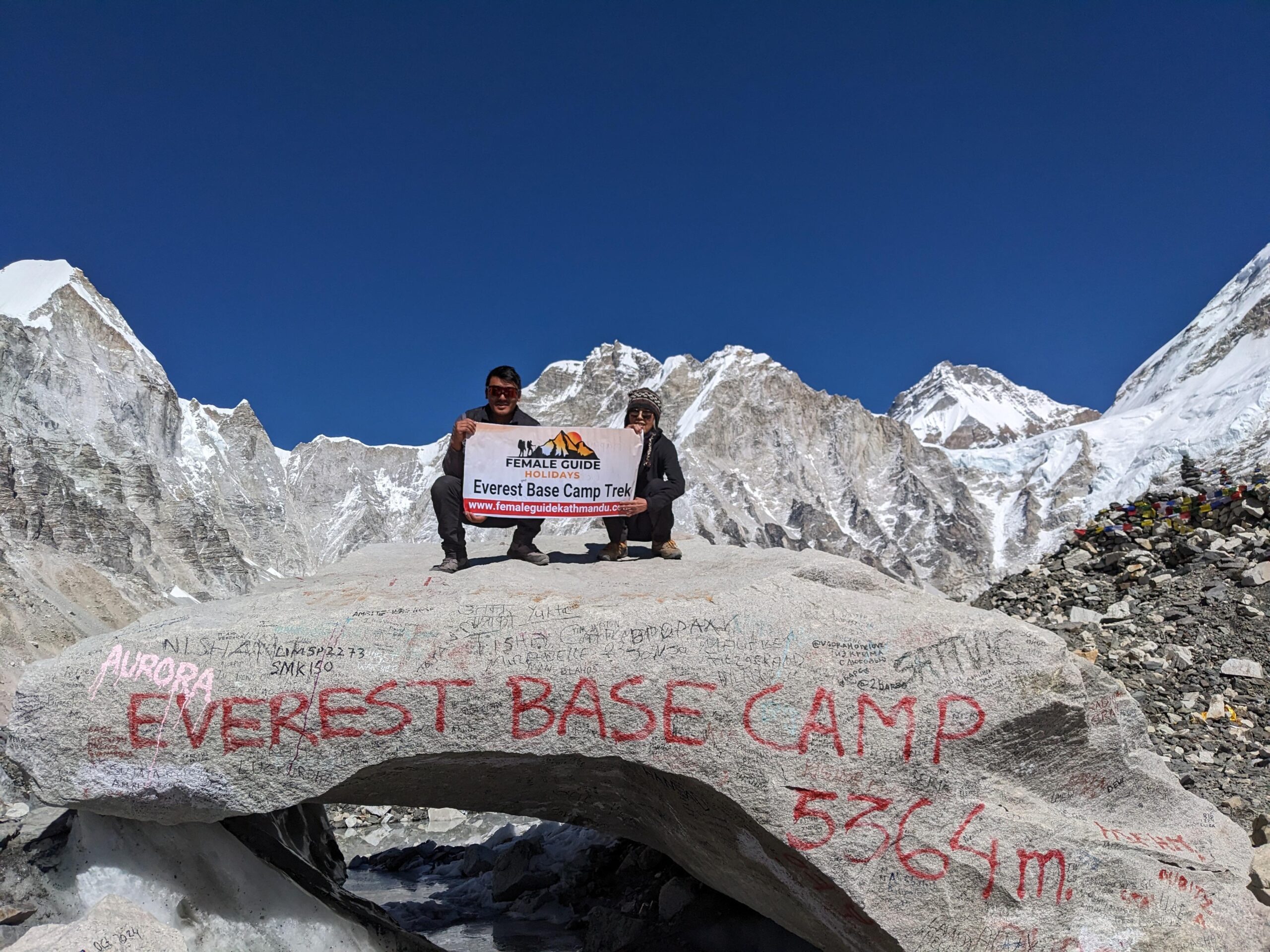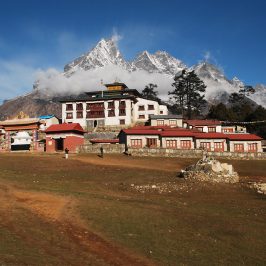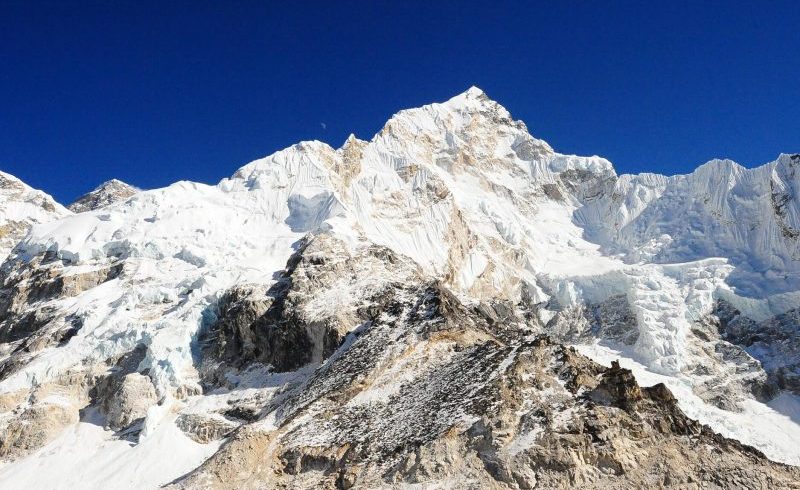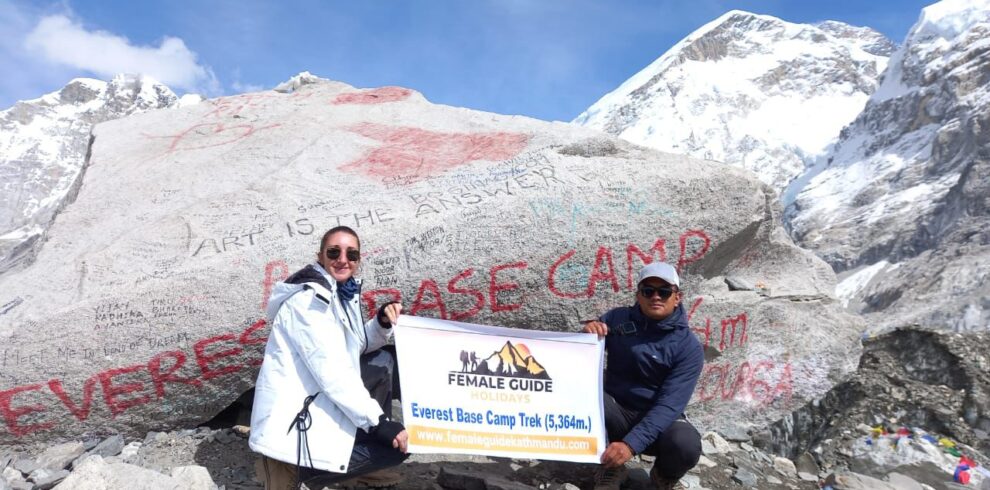On Everest Base Camp Trek witness breathtaking mountain vistas, get a look into the lives of world-famous mountain climbers (the Sherpa), visit Sagarmatha National Park, a UNESCO World Heritage Site, and visit high-altitude Buddhist monasteries on our 15-day Everest Base Camp Trek. Tengboche monastery, among others, holds sacred importance for Buddhists. A stay at Namche Bazaar for a night or two provides for proper acclimatization and a comfortable climbing experience.
An exciting flight to Lukla, the ‘Gateway to Everest,’ kicks off your trekking experience, before reaching your goal, you’ll have to hike for several days across steep terrain. Awe-inspiring views of Himalayan peaks, including some of the world’s tallest, will leave you speechless, cross-swinging suspension bridges across raging glacier torrents. The alpine environment is dominated by snow-capped peaks and beautiful pine and rhododendron woods, at various points along the route, you’ll see Buddhist Mani walls, Chortens, and colorful prayer flags. Overnight breaks in Sherpa towns provide a rare opportunity to experience traditional Sherpa culture and lifestyle.
Entry Permits & Requirements:
The Everest Base Camp Trek requires two permits:
1) Sagarmatha National Park Entry Permit and
2) Khumbu Rural Municipality Entrance Permit.
Unlike many Nepal Himalaya climbs, you won’t require a TIMS (Tourist Information Management System) card for this one.
The Nepal Tourism Board’s office in Kathmandu or the park’s entrance gate in Monjo can provide you with Sagarmatha National Park Entry Permit for NRS 3000.
The fee for citizens of SAARC nations is NRS 1500.
You must complete the permit application and present your passport or a copy of your passport. You must be in Lukla to obtain the Khumbu Pasang Lhamu Rural Municipality Entrance Permit. The permission costs NRS 2000 and may be acquired at the rural municipality counter on the outskirts of the settlement. You won’t have to worry about waiting for permits since the company or our guides will take care of everything.
Travel Insurance:
All clients participating in any activity must have travel insurance. Personal injury, death, hospital expenditures, repatriation fees, helicopter rescue, and any other disease covered by the insurance plan will be given, we highly advise you to acquire a comprehensive insurance plan from a trustworthy insurance company.
Passport and Visa
Every client must have a valid passport from the return date with a 6 months prior validity by the Nepalese consulate in your country or immigration office at Tribhuvan International Airport in Kathmandu.
Equipment lists
- Find the guidelines regarding essential trekking gears.
- Daypack above 40 liters. (Must be waterproof)
- Down jacket (rental available)
- Warm sleeping bag (rental available)
- Sun head, gulf cap, sunglasses, headlamp, and torchlight.
- Ear-muffs, sun Lotions/sun cream.
- One pair of liner gloves is thin wool and synthetic.
- Cotton t-shirts, Synthetic t-shirts.
- Two Long sleeve polyester or synthetic lightweight for sunny days.
- One Soft-shell jacket has water & wind resistance.
- One swimming dress.
- Inner clothes as your requirement.
- Liner socks, woolen socks.
- Proper trekking shoes.
- Imodium or Pepto Bismo capsules for upset stomach or diarrhea.
- Diamox for altitude sickness. The guide will help you to take it.
- One small personal-sized first-aid kit with blister treatments such as moleskin, bands, anti-infection ointments, and muscle relief ointments.




